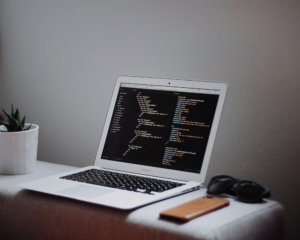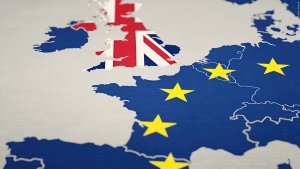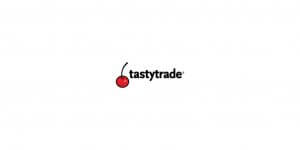Canada’s investment industry body proposes changes to Dark Order requirements
IIROC is proposing amendments to UMIR that would modify the requirements for Dark Orders to provide a better price when trading against certain orders.

The Investment Industry Regulatory Organization of Canada (IIROC) is soliciting comments on proposals to amend the Universal Market Integrity Rules (UMIR)to modify the Dark Order requirements.
Let’s note that a “Dark Order” is defined as:
- (a) an order no portion of which is displayed on entry on a marketplace in a consolidated market display; or
- (b) that portion of an order which on entry to a marketplace is not displayed in a consolidated market display if that portion may trade at a price other than the price displayed by that portion of the order included in the consolidated market display but does not include an order entered on a marketplace as:
- (c) part of an intentional cross;
- (d) a market order that is immediately executed in full on one or more marketplaces at the time of entry;
- (e) a limit order that is immediately executed in full on one or more marketplaces at the time of entry;
- (f) a Basis Order;
- (g) a Call Market Order if that Call Market Order may only trade with other Call Market Orders and the matching of Call Market Orders occurs less frequently than once every minute;
- (h) a Closing Price Order;
- (i) a Market-on-Close Order;
- (j) an Opening Order; or
- (k) a Volume-Weighted Average Price Order.
IIROC implemented the Dark Order Requirements to allow trading in the dark while still preserving price discovery. This was set to be accomplished by requiring a Dark Order to provide a better price when trading against “small”, active orders that would otherwise execute against displayed orders.
The policy objective of this requirement is to preserve price discovery by:
- giving priority to visible orders on a marketplace that are at the same price as Dark Orders on the same marketplace;
- ensuring Dark Orders provide a better price to small orders that could otherwise be executed on a transparent marketplace.
However, the Dark Order Requirements also permit large, active orders to execute against dark liquidity, without price improvement. This aspect of the rule was designed to accommodate the long-standing practice and important function of dark trading and the “upstairs market” to allow investors to place large orders without displaying them to the public in order to minimize the market impact costs associated with such large orders.
IIROC reviewed the thresholds used to capture “small” orders in the Dark Order Requirements and found that orders for low-priced securities (i.e. securities priced at $0.10 or below) with low notional values disproportionately do not receive a better price than higher-priced securities.
Certain stakeholders believe that the proportion of executions on marketplaces that do not display orders in a consolidated market display (dark marketplace) against the proportion of executions on a marketplaces that display orders (lit marketplace) has increased overtime with a significant increase in securities trading below $0.10. They argue that, while the share volume of such orders comply with the 50 STUs threshold, these orders have low notional dollar values and the current application of the threshold negatively affects the price discovery of these securities.
IIROC reviewed historical trading data comparing dark vs. lit trading of low-priced securities for the periods from April to September (inclusive) of 2016 and 2018.
The analysis reveals that the proportion of executions on dark marketplaces vs. lit marketplaces in low-priced securities has increased significantly since 2016. Also, the average order size and value for low-priced securities traded on dark marketplaces have decreased since 2016.
The significant increase in the number of trades for securities trading below $0.10 together with the decrease in both average volume and value validates some of the concerns raised by stakeholders.
When the Dark Order Requirements were initially implemented, only a small number of low-priced securities were traded in the dark without price improvement but this is no longer the case. The problem is that the current 50 STUs threshold alone does not effectively capture “small” orders in low-priced securities and therefore does not fully meet the policy objective of the Dark Order Requirements. In order to guarantee that it is appropriately achieving the policy objective of preserving price discovery, IIROC believes that updating the threshold to better reflect the value of small orders for low-priced securities is necessary.
IIROC is of the view that the combination of both a minimum dollar value and a minimum volume will better capture small orders, especially those in low-priced securities. Specifically, the Proposed Amendments would add a minimum order value of $30,000 on top of the current threshold of 50 STUs. Therefore, an order would be able execute against a Dark Order without receiving a better price only if it is sufficiently large in both volume (over 50 STUs) and value (over $30,000).
Put otherwise, if the new requirements are implemented, participants, marketplaces and vendors would need to make necessary technology changes to ensure that orders with a notional dollar value of less than $30,000 do not trade against a Dark Order unless the order receives a better price.
While IIROC welcomes comments on all aspects of the Proposed Amendments, it specifically requests comments on the following questions:
- 1. Will the proposed floor value of $30,000 adequately capture small orders and address concerns regarding low-priced securities trading in the dark without price improvement? Would a $25,000 threshold be more appropriate? If so, why?
- 2. What is the scope of work required to make the appropriate systems changes? Is a 90-day implementation period reasonable?
- 3. Are there any unintended consequences arising from the proposed inclusion of the $30,000 threshold in UMIR Rule 6.6?
If approved, the Proposed Amendments would become effective no less than 90 days after publication of the notice of approval.
IIROC invites comments on all aspects of the Proposed Amendments, including any matter which they do not specifically address. Comments are accepted in writing by March 15, 2019. They should be sent to:
Sanka Kasturiarachchi,
Policy Counsel, Market Regulation Policy
Investment Industry Regulatory Organization of Canada
Suite 2000
121 King Street West
Toronto, Ontario M5H 3T9
e-mail: [email protected]
A copy should also be provided to the CSA by forwarding a copy to:
Market Regulation
Ontario Securities Commission Suite 1903, Box 55
20 Queen Street West
Toronto, Ontario M5H 3S8
Fax: (416) 595-8940
e-mail: [email protected]









